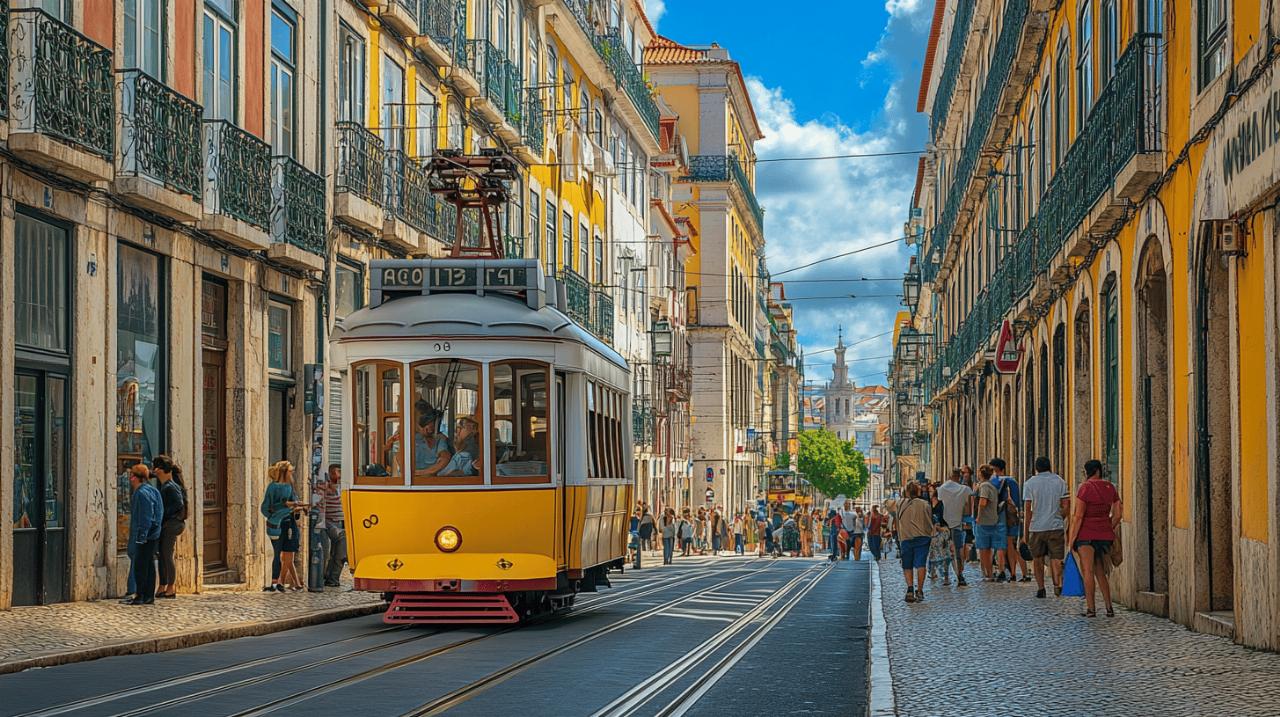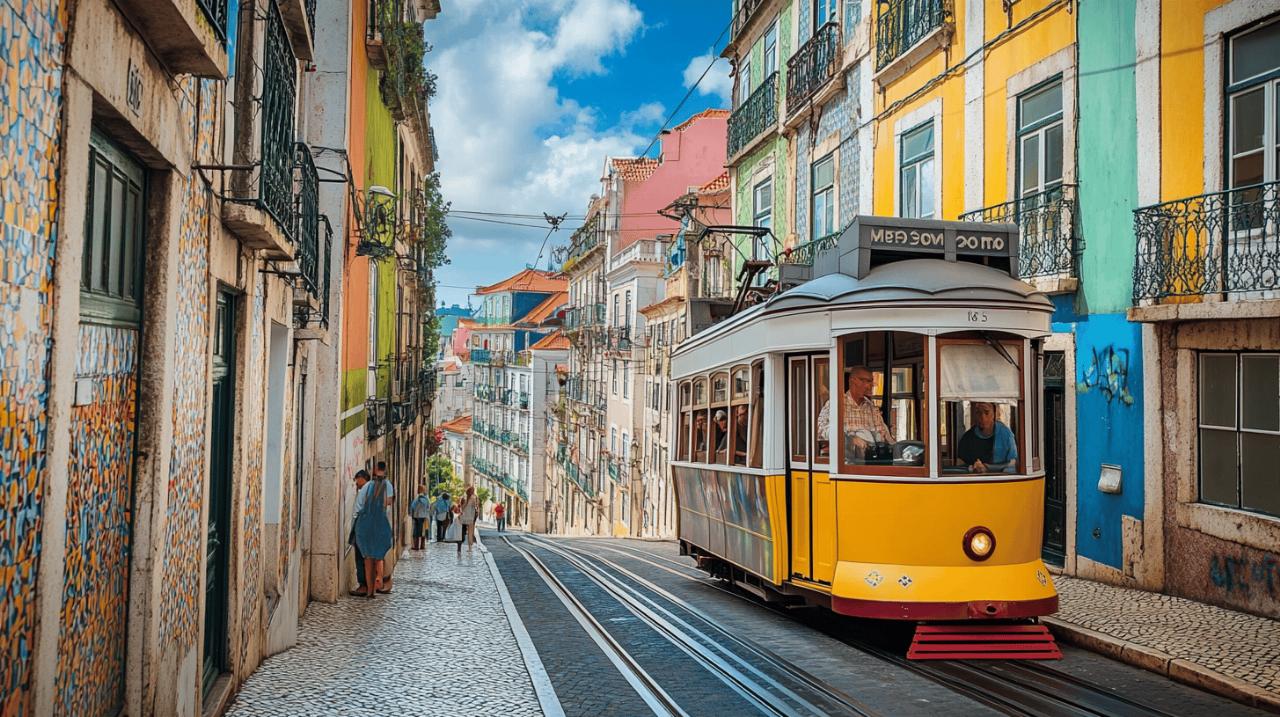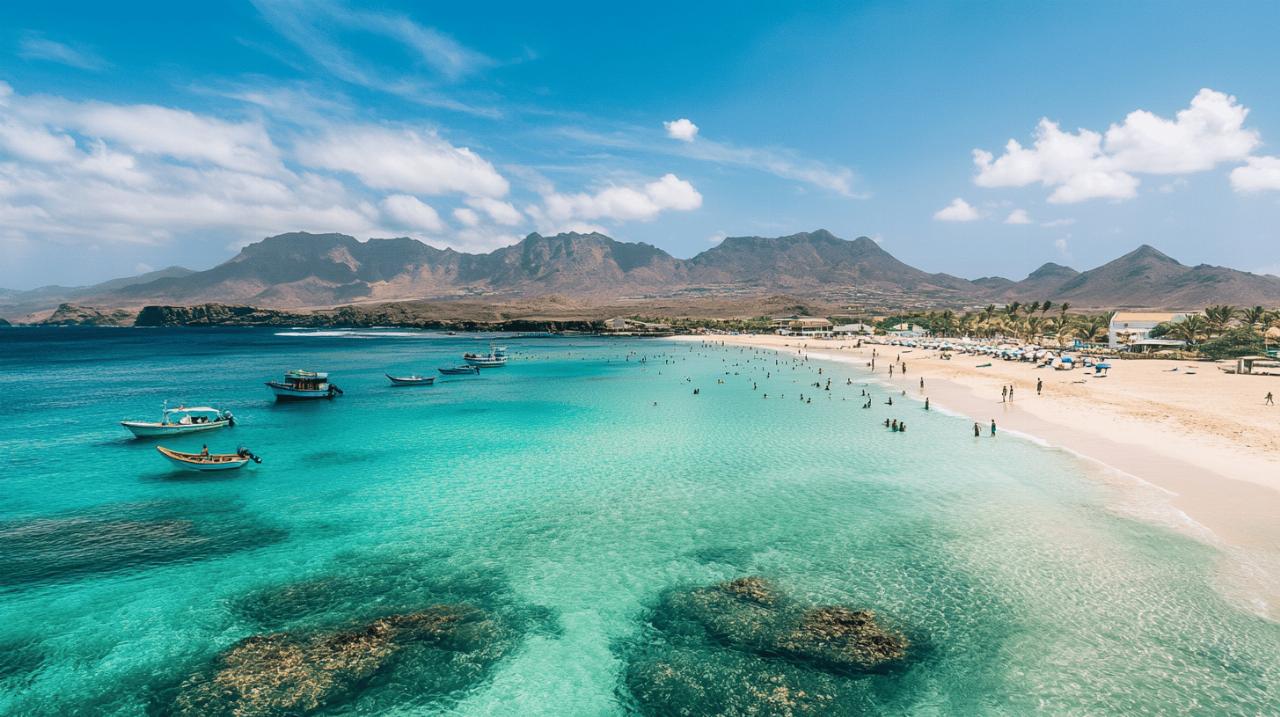Explore Portugal’s Capital: Lisbon in Detail – How to Navigate Like a Local Using Public Transport
Lisbon, Portugal's vibrant capital, is a city where ancient history meets modern energy, all set against the stunning backdrop of the River Tagus. Known for its charming districts, historic monuments, and hilly terrain, Lisbon can seem daunting to navigate at first. However, its comprehensive and efficient public transport system makes exploring the city straightforward and enjoyable. Whether you're wandering the narrow streets of Alfama, heading to the historic district of Belém, or planning a day trip to Sintra, understanding how to use the metro, trams, buses, trains, and ferries will transform your visit into a seamless adventure.
Getting started: understanding lisbon's public transport system
Types of Transport Available: Metro, Trams, Buses, and Ferries
Lisbon offers a diverse range of public transport options that cater to every type of journey. The metro system is the backbone of the network, comprising four colour-coded lines: green, blue, yellow, and red. Operating from half past six in the morning until one o'clock at night every day, the metro is a reliable choice for moving swiftly across the city. Many stations are also wheelchair accessible, making it a convenient option for all travellers. The metro connects major districts and is particularly useful for reaching areas like Baixa, Parque das Nações, and points further afield.
Trams are iconic to Lisbon and operated by Carris. These charming yellow vehicles rattle through the city's steep hills and narrow streets, offering a nostalgic and scenic way to travel. The famous Tram 28 winds through Alfama, Baixa, and Bairro Alto, providing an authentic glimpse into local life. For those heading to Belém, Tram 15E is the scenic route of choice, taking passengers along the waterfront to visit landmarks such as the Jerónimos Monastery and Belém Tower. Beyond trams, the city also features funiculars and the Santa Justa Lift, which help navigate Lisbon's steep gradients with ease.
Buses complement the metro and trams, with a network of 172 routes covering the entire city. These yellow buses run from five in the morning until eleven at night on most major lines, extending their reach to neighbourhoods not served by the metro or trams. Buses are particularly useful for reaching residential areas and outlying districts. Additionally, ferries operated by Transtejo connect central Lisbon to the south bank of the Tagus, including Cacilhas and Almada, where the Cristo Rei statue stands. These ferry routes offer not only practical transport but also stunning views of the city skyline and the 25 de Abril Bridge.
Ticketing Options and Travel Passes for Visitors
Navigating Lisbon's ticketing system is straightforward once you understand the options available. The navegante card, previously known as the Viva Viagem, is the most cost-effective and versatile choice for visitors. This rechargeable card costs just fifty cents and can be loaded with various ticket types, including single trips, 24-hour passes, or a flexible credit system called Zapping. It is important to note that different ticket types cannot be mixed on the same card, so you will need to choose the option that best suits your travel plans.
For those planning to use public transport extensively, the 24-hour pass is a practical investment. It allows unlimited travel on metro, buses, trams, and funiculars within the chosen zones for a full day. The Lisboa Card is another excellent option, offering not only unlimited public transport but also free or discounted entry to many of the city's top attractions, including the Jerónimos Monastery, Belém Tower, and the Lisbon Oceanarium. Prices for these cards vary, with the Lisboa Card starting at around thirty-one euros, depending on the duration selected.
Single tickets are available for those making only occasional journeys, though they tend to be less economical if you are travelling multiple times throughout the day. Tickets must be validated at the start of each journey by tapping the card on the reader at metro gates, onboard trams and buses, or at ferry terminals. Keeping your navegante card handy and ensuring it has sufficient credit will make moving around Lisbon smooth and hassle-free.
Navigating key districts using public transport
Reaching Alfama, Baixa, and Bairro Alto by Metro and Tram
Alfama, Lisbon's oldest district, is a labyrinth of narrow, cobbled streets filled with Fado houses, charming cafes, and stunning viewpoints known as miradouros. To reach Alfama, the metro is your first step. Alight at Rossio or Terreiro do Paço stations, both on the green line, and from there, it is a short walk or tram ride into the heart of the district. Tram 28 is the most popular route into Alfama, winding its way through the narrow streets and offering glimpses of daily life in this historic neighbourhood. Be mindful, however, that this tram is often crowded and a magnet for pickpockets, so keep your belongings secure.
Baixa, the city centre, is easily accessible by metro, with several stations serving the area, including Baixa-Chiado and Rossio. This district was meticulously rebuilt after the devastating earthquake of 1755, resulting in its grand squares and elegant Pombaline architecture. Walking through Baixa is a delight, with wide avenues and impressive buildings, but public transport makes it simple to reach from any corner of the city. From Baixa, you can also catch Tram 28 to explore further afield or hop on a funicular to ascend to Bairro Alto.
Bairro Alto is renowned for its vibrant nightlife, with buzzing bars, traditional restaurants, and live music venues. The district sits atop one of Lisbon's famous seven hills, and the Elevador da Glória funicular provides a charming and efficient way to reach it from Baixa. Alternatively, the metro station at Baixa-Chiado offers a direct connection, with a short walk uphill to the heart of Bairro Alto. This district is best explored on foot once you arrive, allowing you to soak in the bohemian atmosphere and discover hidden corners.
Getting to Belém: Bus Routes and the Scenic Tram 15E
Belém is a must-visit district, home to some of Lisbon's most iconic landmarks, including the Jerónimos Monastery, Belém Tower, and the Monument to the Discoveries. Reaching Belém is straightforward, with several transport options available. Tram 15E is the most scenic and popular choice, departing from Praça do Comércio and travelling along the waterfront. This route offers spectacular views of the Tagus and the 25 de Abril Bridge, making the journey as memorable as the destination itself.
Buses also serve Belém, with several routes connecting the district to central Lisbon. The bus network is particularly useful if you are staying in areas not directly served by the tram line or if you prefer a quicker journey without the tram's frequent stops. Once in Belém, the attractions are within walking distance of each other, allowing you to explore at a leisurely pace. Do not miss the chance to visit the original Pastéis de Belém bakery, where you can savour the city's famous custard tarts in the place where they were first created.
Belém is also a gateway to exploring the south bank of the Tagus, with ferry services operating nearby. After visiting the district's historic sites, consider taking a ferry to Cacilhas or Almada, where the Cristo Rei statue offers panoramic views of Lisbon and the river. This combination of tram, bus, and ferry travel provides a comprehensive and enjoyable way to experience one of Lisbon's most historically rich areas.
Local tips for using lisbon's iconic transport
Riding the Historic Tram 28 Like a Proper Lisbonite
 Tram 28 is more than just a mode of transport; it is an experience that encapsulates the essence of Lisbon. This historic tram route winds through some of the city's most picturesque and culturally significant neighbourhoods, including Graça, Alfama, Baixa, and Estrela. To ride it like a local, timing is key. Early mornings or late afternoons are the best times to board, as midday tends to attract large crowds of tourists, making the journey uncomfortable and increasing the risk of pickpocketing. Locals often favour other transport options during peak hours, so following their lead can enhance your experience.
Tram 28 is more than just a mode of transport; it is an experience that encapsulates the essence of Lisbon. This historic tram route winds through some of the city's most picturesque and culturally significant neighbourhoods, including Graça, Alfama, Baixa, and Estrela. To ride it like a local, timing is key. Early mornings or late afternoons are the best times to board, as midday tends to attract large crowds of tourists, making the journey uncomfortable and increasing the risk of pickpocketing. Locals often favour other transport options during peak hours, so following their lead can enhance your experience.
When boarding, have your navegante card ready and tap it on the reader near the driver. If the tram is crowded, stand near the doors and be prepared to move as passengers get on and off. Whilst tourists often stand to take photographs, locals typically sit and use the journey to relax or commute. Adopting a more laid-back approach allows you to appreciate the rhythm of the tram as it rattles along the tracks, the bell ringing as it navigates tight corners and steep hills. The journey itself is a window into Lisbon's soul, passing colourful buildings, tucked-away cafes, and views that seem to change with every turn.
For a quieter alternative with a similar charm, consider Tram 12 or Tram 25, which also traverse interesting parts of the city but with fewer tourists. These routes offer the same authentic experience without the hustle and bustle, allowing you to enjoy the ride at a more leisurely pace. Remember, the goal is not just to reach your destination but to savour the journey, much like the locals do.
Making Use of Elevadores and Funiculars Across the Hills
Lisbon's hilly terrain is one of its defining features, and the city's funiculars and elevators are ingenious solutions that make navigating the steep slopes far less daunting. The Elevador da Glória, Elevador da Bica, and Elevador do Lavra are three charming funiculars operated by Carris, each offering a quick ascent to higher neighbourhoods. These vintage vehicles are not only practical but also add a touch of nostalgia to your travels. The Elevador da Glória, for instance, connects the bustling Restauradores Square in Baixa to the bohemian Bairro Alto, climbing a steep incline with ease.
The Santa Justa Lift, or Elevador de Santa Justa, is perhaps the most famous of Lisbon's elevators. This neo-Gothic iron structure stands as a striking landmark in Baixa, offering a vertical journey to Carmo Square and a viewing platform at the top. Whilst it is a popular tourist attraction, locals also use it as a convenient shortcut when crossing between the lower and upper parts of the city. The lift operates throughout the day, and your navegante card or Lisboa Card grants you access, making it an affordable addition to your itinerary.
Using these funiculars and elevators is a practical way to conserve energy whilst exploring Lisbon's hills. They are especially useful after a long day of walking, allowing you to continue your exploration without exhaustion. Locals rely on these services as part of their daily routine, seamlessly integrating them into their journeys across the city. By doing the same, you will not only save your legs but also enjoy a unique perspective on Lisbon's architecture and layout.
Day Trips and Extended Routes from Lisbon
Taking the Train to Sintra and Cascais
Venturing beyond Lisbon is made easy by the city's commuter train system, which includes direct lines to two of the region's most enchanting destinations: Sintra and Cascais. The Sintra line departs from Rossio station and takes approximately forty minutes to reach this fairytale town, nestled in the hills northwest of the capital. Sintra is renowned for its romantic palaces, including the colourful Pena Palace perched atop a forested hill and the mystical Quinta da Regaleira with its intricate gardens and underground tunnels. The train journey itself is comfortable and frequent, with services running from six in the morning until one o'clock at night.
Cascais, on the other hand, offers a different charm with its coastal beauty and relaxed atmosphere. The train from Cais do Sodré station follows the scenic coastline, passing through Estoril and providing stunning views of the Atlantic Ocean. The journey takes around thirty-five minutes, making it an ideal half-day or full-day excursion. Once in Cascais, you can explore sandy beaches, enjoy fresh seafood at waterfront restaurants, or stroll through the charming historic centre. Both Sintra and Cascais are well worth the trip, offering a refreshing contrast to the urban energy of Lisbon.
Using your navegante card, you can load it with a ticket for these routes, ensuring a smooth and cost-effective journey. Trains are reliable and comfortable, and locals frequently use them for weekend getaways, so you will be travelling in good company. Whether you are drawn to the romantic allure of Sintra or the seaside tranquillity of Cascais, these day trips are essential additions to any Lisbon itinerary.
Ferry Routes Across the Tagus to Cacilhas and Beyond
Crossing the Tagus River by ferry is one of the most enjoyable ways to gain a fresh perspective on Lisbon. The Transtejo ferry services connect the city to several points on the south bank, including Cacilhas, a lively neighbourhood in Almada. Ferries depart regularly from terminals near Cais do Sodré and Terreiro do Paço, with the journey to Cacilhas taking just ten to fifteen minutes. The crossing offers unparalleled views of Lisbon's skyline, the 25 de Abril Bridge, and the Cristo Rei statue, which towers over the south bank.
Cacilhas is a destination in its own right, known for its traditional fish restaurants and vibrant atmosphere. From the ferry terminal, you can take a bus or taxi to the Cristo Rei monument, where a viewing platform provides sweeping panoramas of Lisbon and the surrounding area. This excursion is particularly popular in the late afternoon, when the golden light creates a magical ambience. Ferries are also an integral part of the daily commute for many who live on the south bank, so using them is a genuinely local experience.
Beyond Cacilhas, other ferry routes extend further along the Tagus, including services to Seixal and Montijo. These journeys are less touristy and offer a glimpse into life beyond the capital. The navegante card covers ferry travel, making it an affordable and convenient addition to your transport options. Whether you are seeking stunning views, exploring new neighbourhoods, or simply enjoying a relaxing voyage on the water, the ferries of Lisbon are an essential part of the city's transport tapestry.

